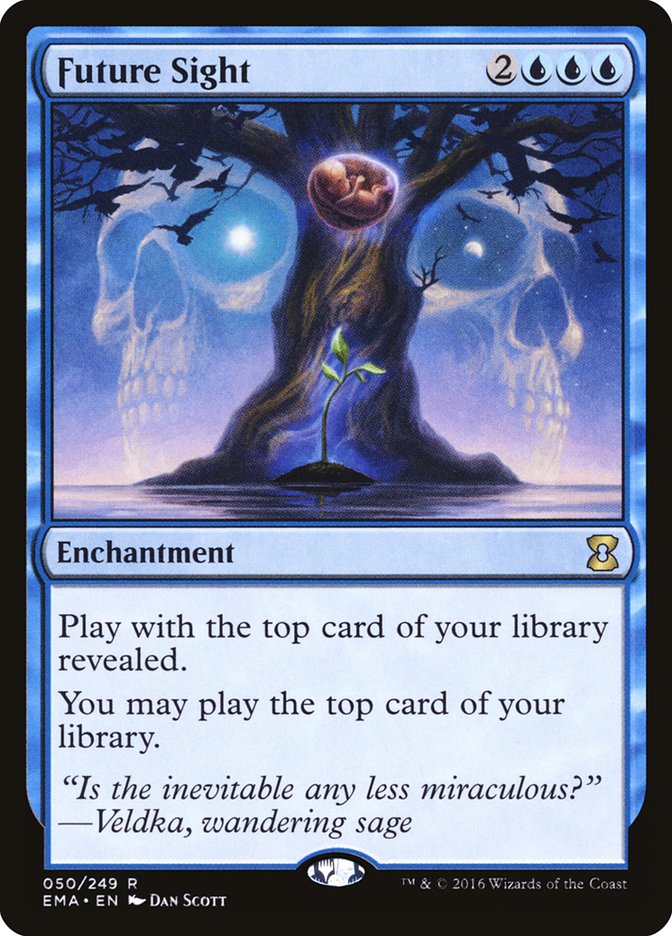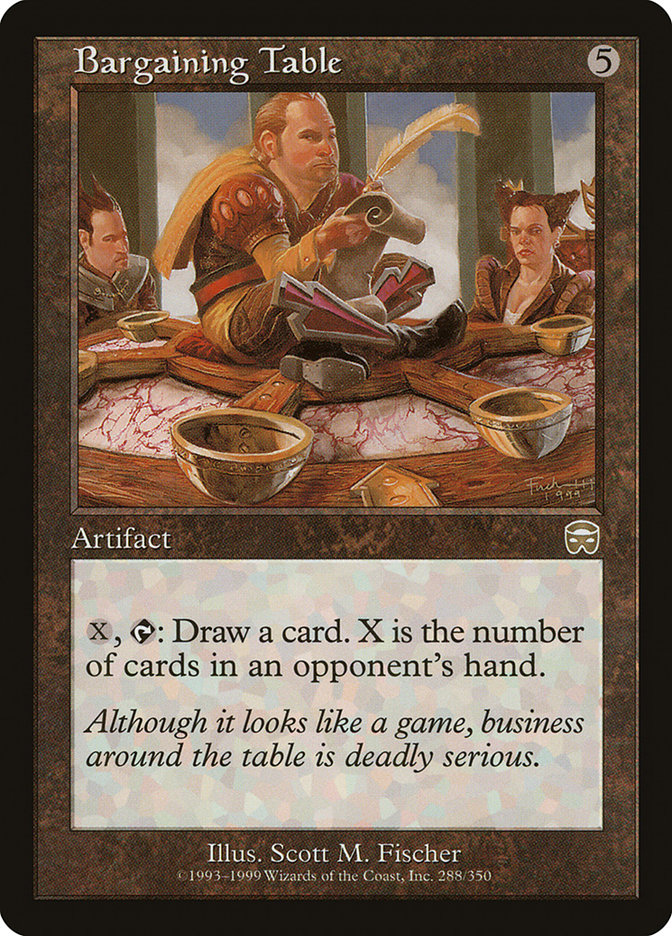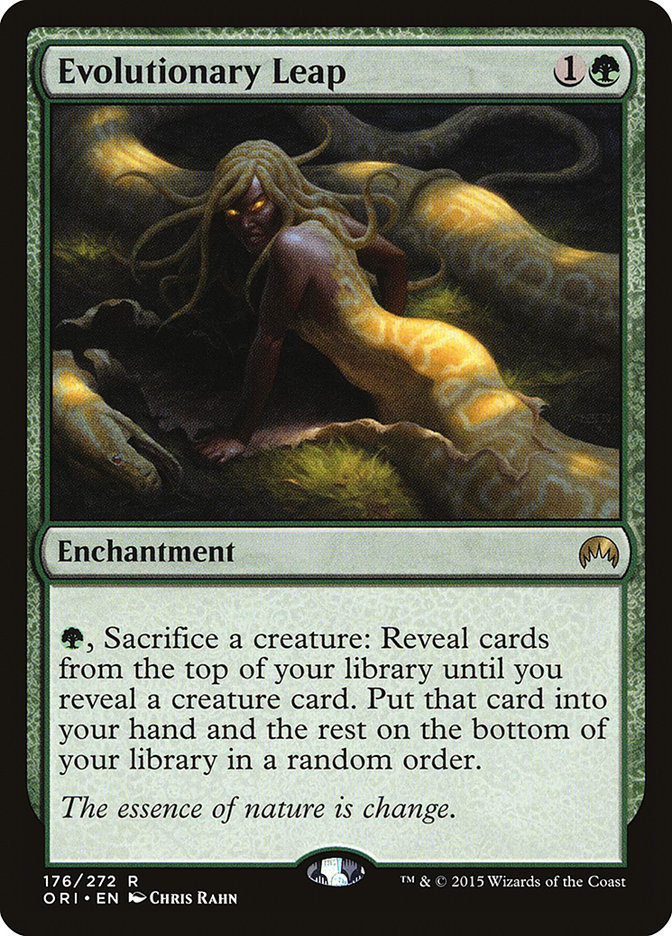A few weeks back I decided to kick my feet up and watch the coverage of #SCGWOR all weekend long. It’s been months since the last time I’ve gotten to do this thanks to my busy Grand Prix schedule, so it was shocking to see how important the roles of teams had gotten on the SCG Tour®.
I was around for the creation of Lotus and then soon after Disciples of Bolas earlier this year, and even though I knew of MetaGameGurus, I wasn’t truly digesting that information. Now at #SCGWOR I saw firsthand the unveiling of Team Cardhoarder and it dawned on me that a new era of professional Magic was being born. On the surface it may look like Team Cardhoarder and MetaGameGurus are just reinventing the wheel, but something may in fact be different about their approach. Today we dive deep into the world of teams as we explore that possibility.
Teams have been around for almost as long as money could be made playing Magic. The Pro Tour was initially designed to legitimize the game and get players invested into structured play. Large cash prizes enticed players from all over the world to take the game more seriously and travel to events. These players practiced for tournaments by working hard at finding strong combinations of cards to play with. Wizards would take the decklists obtained from the event and distribute them around the world, initially in magazines and eventually on the internet. Different players around the world not playing on the Pro Tour would see these decks and become interested in playing them in a competitive setting. That is what fueled local game stores.
It all started with five guys creating Pacific Coast Legends. This group of individuals realized that working together for a Pro Tour would help their chances in the event. This seems so obvious to us now, but so do concepts like tempo, card advantage, and metagaming. These pioneers didn’t have a foundation to work off of like we do now. The idea that testing with the potential competition doesn’t come without paranoia.
Pacific Coast Legends paved the way for the first era of Magic Pro Tour Teams. Soon followed Hacker’s Hitmen, Deadguy, and East Coast Assassins. These teams all consisted of four to six guys who were friends who played Magic and were geographically close to one another.
Soon followed Team CMU that included players like Randy Buehler, Mike Turian, Aaron Forsythe, and Andrew Cuneo. This team set the pace for how a team should structure its testing. They worked harder than any other groups and their results showed they were on to something. They began working with TOGIT, and for a moment in history we saw a glimpse into the future to what a “Super Team” could look like.
Time went on and we started seeing international teams beginning to form when Kai Budde and Zvi Mowshowitz along with others formed Team Godzilla. Soon after Japan began its dominance on the pro circuit when Tsuyoshi Ikeda led Team Fireball Pro to the center stage of Magic. No longer did success come easily for American players, and a team called Taking Back Sunday was formed with the understanding that more work had to be done to compete on the highest stages of the game.
Then this happened.
This group of players didn’t think they would be revolutionizing testing when they wanted to take a vacation in Hawaii, but that’s exactly what happened. The hook “play the game, see the world” took hold, and everyone wanted to get a chance at living the dream and getting to go somewhere exotic for an extended period of time for a “playcation.” Soon groups of qualified players started renting houses weeks before Pro Tours in the corresponding cities for some fun and games.
In 2009 Team CFB took Pro Tour testing to a whole new level by creating the first “super team.” For Pro Tour San Diego Luis Scott-Vargas got many of his content producers for ChannelFireball together to form a well-structured testing team. The team met up in San Jose, California, where a few of the members of the team lived and where the website’s store is located. The team tested for close to two weeks and then embarked south towards San Diego. Luis Scott Vargas ended up making the Top 8, but the story of the weekend was his 16-0 Swiss finish.
Next the team met in San Juan, Puerto Rico and rented a beach house for testing. A few weeks of work ended up putting three members of the team into the Top 8 of that Pro Tour. Amsterdam netted the team two players finding the Sunday Stage. The same can be said for Worlds 2010. Then came Pro Tour Paris, where the team took down the entire event with one of the most dominant decks of all time.
Creatures (8)
Planeswalkers (7)
Lands (26)
Spells (19)
- 3 Mana Leak
- 4 Day of Judgment
- 4 Spell Pierce
- 1 Deprive
- 4 Preordain
- 1 Stoic Rebuttal
- 1 Sylvok Lifestaff
- 1 Sword of Feast and Famine
Sideboard

Pro Tour Paris solidified Team CFB’s dominance on the Pro Tour and showed the world that the “super team” model was the future. Team CFB took bits and pieces from fallen teams to create the “perfect” structure for testing at the highest stages: two weeks of dedicated testing, role assignments, accountability, and loyalty. Player’s not meeting the demands of the team would be replaced with those who did.
It wasn’t long until new super teams started to emerge like Team Star City Games, The Pantheon, F2F, MTG Mint, Team Revolution, EUreka, and so many more. All modeled after Team CFB’s blueprints.
Throughout history, Pro Tour teams were modeled to get the best finishes out of Pro Tours. That’s due to these events being so critical for the longevity for one’s career. This was amplified when the Player’s Club was unveiled in 2005. This system rewarded players on the Pro Tour for having an exceptional year on the circuit. Players who achieved certain thresholds in the Player’s Club would be rewarded with appearance fees, flights, and even hotel accommodations for Pro Tours.
This was revolutionary for players who took competitive Magic seriously, since now the idea of being a pro was much more tangible. Now a player could turn good results into some real stability. No longer could a bad string of events leave a player without the means to get to the next event. Thanks to the Player’s Club, the Pros would now be able to map out their next year and know that there was a safety net that would not let them fall too far.
Another major aspect to professional Magic around this time, and still today, was content production. The internet was at full throttle and we were even starting to see cell phones becoming better computers than we had at home. More and more Magic-related websites started hiring Magic pros and personalities to create content for them. This was a way for pro Magic players to not only diversify their revenue streams but build brands and become further cemented in the community in exchange for high-level strategy content for the masses.
Taking a step back from Pro Tour teams, we saw a secondary tournament series being born. In 2009, Star City Games began hosting tournaments around the United States. These started as events independent from one another but quickly became something much bigger. Prizes increased as well as the circuit’s visibility. Star City Games began streaming live video coverage of each event to highlight the tournament series and its key players.
There soon followed Invitationals, which players had to qualify for via Invitational Qualifiers, good SCG Open results, or an accumulation of points rewarded from both IQs and Opens. A new professional circuit was born in the form of the SCG Tour®.
The history of how players on the SCG Tour® approached the circuit looked very similar to that of the Pro Tour. Groups of people that lived near each other would prepare and travel together for events. Sometimes an Invitational would be in an exotic enough location that players would group together and rent a house for a week of testing and hang outs. For a short period this circuit even had its own Player’s Club, where thresholds of yearly points would reward cash and prizes. Around this time it looked like a team was even forming around those most committed to the circuit, but this dissipated when the Player’s Club transformed into the Players’ Championship.
In 2012 a critical mass of players started moving to Roanoke, VA to do content for Star City Games. This was the birth of the Versus Series as well as a group of players from that area who traveled to Opens and Invitationals. They did not have an official name, nor were they marketed as anything more than “The Roanoke Guys” or “The Versus Squad.” This group joined forces each week in preparation for the upcoming event but did not take the form of an independent team. They instead were a part of multiple different Pro Tour teams and would separate from one another when it came time to practice for the PT.
It wasn’t until the middle of 2014 that we saw the birth of the first marketed team on the SCG Tour® in the form of Nerd Rage Gaming. Captained by Kent Ketter, this group of individuals wore their matching gear as banners for the card store out of Illinois. The members of this team didn’t live that close to each other, and in fact most likely wouldn’t have formed without a sponsor. This made them the first successful business-facing team in the history of the game.
The creation of a business-facing team had not happened yet due to how important having good Pro Tour results are to those competing in them. With only four of them a year, players trying to compete on the Pro Tour circuit prioritize individual results in these events over everything else. This makes it vital that the players making up teams have 100% control over the inner workings of it. These decisions include the addition and removal of players, the structure of testing, and what events they are prioritizing when it comes to the Grand Prix circuit for additional points. Investing into pro teams comes with very little control.
Many of the players on the Pro Tour circuit are also sponsored by and do content for a specific website, which does not dictate what teams they participate on. The only restriction these players usually have is that they must wear a shirt that promotes that business. This can cause a conflict of interests when it comes to negotiations with potential team sponsors.
All of this does not completely eliminate Pro Tour teams from having sponsors. There are many teams out there today that are sponsored on the Pro Tour circuit, but it tends to not be that big of a priority to obtain one. Players on these teams want a sponsor since it’s added value at limited cost. They get an additional revenue stream, and the business sponsoring them gets advertisement by creating walking billboards.
These relationships tend to not go much further because player-facing teams are volatile to invest into without additional stipulations. They can constantly be shifting in makeup, merging with other teams, or disbanding. There’s also the added variance that comes with players falling off the Pro Tour. The longevity for investment is just not there, and without much or any control over team decisions, the level of investment tends to be low without much room for potential for growth.
There is a theory going around that this could change in the future, but that is currently dependent on a steep growth in viewership. More eyes on the screen would entice larger investors, which could in turn tip the scales for Pro Tour players to be more interested in business-facing teams. This may be very difficult to obtain with how the Pro Tour is currently structured and often comes off as a pipe dream.
We actually did see Wizards trying to make a drastic step towards this with their announcement about changes to the Player’s Club and Worlds at Pro Tour Shadows over Innistrad a few months back. They planned to reduce the Platinum player perks by $11,000 and reinvest this money into Worlds. This would create a much larger first-place prize, which could increase viewership if they also invested into the production level of this prestigious event.
This decision was overturned by Wizards when there was a backlash from both the Platinum Players as well as the fans of the Pro Tour. Both parties saw the reduction in Platinum benefits on such short notice as an injustice to the professional players that promote the game. It was agreed upon that whatever decision Wizards would make to the Player’s Club would be respected, but not on such short notice.
This attempt by Wizards foreshadows the company’s interest in giving professional Magic a remodeling, but it might take some time for people to get used to it, since change is not appreciated in the Magic community that often. Especially when it looks like things are being taken away from the players that make up the pro community.
This finally brings us back to Team MetaGameGurus and Team Cardhoarder, two teams on the SCG Tour® that are business-facing. This is something we’ve only seen once before and on a much smaller level. This could very well be the next evolutionary step taken by professional teams and these two groups are on the ground floor.
Team MetaGameGurus is captained by Jim Davis. Their website shows that the team is partnered with a variety of different businesses in the gaming community. The team’s goals are to excel on the SCG Tour® but also to promote their sponsors in every way they can. An example of them going above and beyond is attending Friday Night Magic the night before an SCG event to do open play against the locals. Defeats inflicted on the team members net the victors some of the products their sponsors sell.
Team MetaGameGurus has taken the first step towards a structured model for business-facing teams, but Team Cardhoarder gets credit for the first giant leap.
This team is structured with two unique tiers, Prime and The Academy. Prime is filled with the more well-known and accomplished players. The Academy is comprised of up-and-comers that the team believes to show dedication to the SCG Tour® and promise in becoming the next generation of professional Magic players. Prime members not only mentor Academy members as one of their requirements from their sponsor, they also provide the website with content and promotional streams. In return their sponsor compensates the Prime members with revenue to be used for their travel expenses for SCG Tour® events.
Team Cardhoarder prepares for events together, but proximity is a hurdle. This is alleviated by Cardhoarder, which provides the team with the tools necessary for them to prepare for events together on Magic Online.
These team structures are much different from those on the Pro circuit, as they should be. Two unique tournament series should most likely create two different models for how teams are designed and operate. In the end, all teams are looking for the same thing, which is stability, but that will be dependent on how the tournament series is structured. The Pro Tour has the Player’s Club, which incentivizes strong results in a small subset of events with a cap on how many lower-level events a player can obtain points from. The SCG Tour® incentivizes players to participate in a high volume of events.
Just because the SCG Tour® incentivizes players to play often doesn’t mean they would. What made this a reality is SCG’s pride in promoting its players and their commitment to providing excellent coverage of all their events. They began this process years ago, and now we see the fruits of their labor by seeing an entirely new subset of Magic players being cultivated on the SCG Tour®.
Star City Games created a tournament series as well as a new generation of professional players. The high quality of coverage has grown a loyal viewer base, which has now attracted sponsors who create symbiotic relationships with the circuit’s more popular players.
The sky’s the limit with where these new team models will take us. We may even see a shift away from the Player’s Club, which could cause Pro Teams to become more business-facing. No one actually knows what’s in store for us, but it’s exciting to see where things go.






